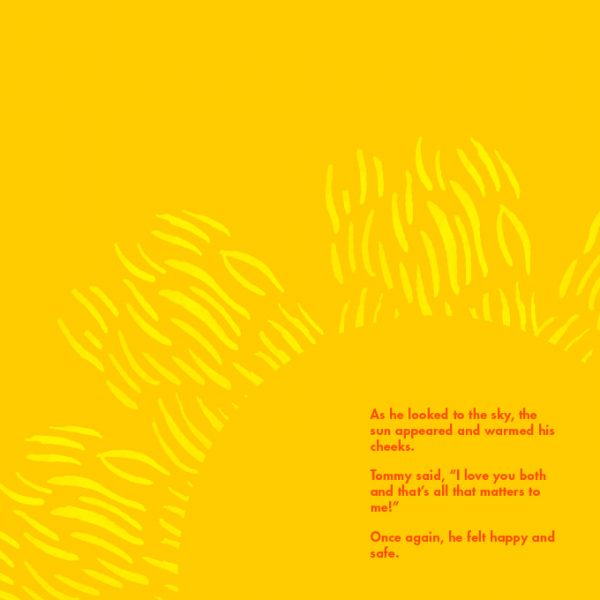From care to custody: the tragic trajectory of crossover kids

Darcy first came onto the radar of child protection authorities at birth. Early protective concerns related to his parents’ abuse of alcohol and other substances, transience, and severe family violence, including attempted murder, for which his father spent time in jail.
At age six, while Darcy and his mother were fleeing, she died from the impact of family violence and he went to live with his father, until the latter was jailed for the violence against his mother.
Darcy then briefly lived with relatives, during which time he was sexually abused. He returned to live with his father, who had been released from prison, but was subsequently physically abused, including having a weapon held to his throat. Darcy was nine years old.
He started using cannabis, was expelled from school, then rejected by his father.
Darcy was then placed in residential care but would often abscond and spend time with other homeless children. It was then that he was arrested for the first time, for shoplifting. He had no clothes but for those on his back, no money and nowhere to go. He was 12 years old.
While youth crime is a steady topic of media and political debate, comparatively little attention is given to the backgrounds of maltreatment and adversity experienced by many children and young people, such as Darcy, caught up in these systems.
A new study undertaken by Monash researchers for the Australian Institute of Criminology has found that one in five children before Victorian youth criminal courts was involved with the state’s statutory child protection system, with this figure rising to one in three children in some regional areas.
This group, often termed “crossover” children due to their involvement across the two statutory systems responsible for protecting children and addressing youth offending, are at least nine times more likely to come under youth justice supervision. At the same time, very little is known about how these outcomes come about.
In partnership with the Children’s Court of Victoria, researchers conducted a thorough examination of 300 Victorian Children’s Court case files, alongside consultations with a range of professionals involved in the lives of crossover children, to help shed light on the backgrounds and pathways of children who experience contact with both the child welfare and criminal justice systems.
A key study finding was the high levels of adversity experienced by many crossover children. Around three quarters of the children surveyed had grown up around family violence, and one in five children had lost a parent before their 18th birthday. Particularly striking were the number of traumatic and challenging life events this group endured from young ages.
More than two-thirds of the children whose files were surveyed had experienced five or more adverse childhood events, including physical, emotional or sexual abuse, neglect, exposure to family violence, parental death, or growing up in households with others who experienced serious substance abuse and mental health concerns, or criminal justice system involvement.
The children themselves experienced many challenges related to their health and wellbeing, including 50 per cent who were diagnosed with neurodevelopmental disabilities such as intellectual disability and learning and communication disorders, 61 per cent who experienced mental health conditions often related to trauma and parental attachment, and 35 per cent who experienced self-harm and suicidality.
Crossover children tend to be younger than other children coming before the youth courts, with the study finding they were three times more likely than other Victorian children before the courts to be first sentenced under the age of 14.
Importantly, the greater the childhood adversity experienced among crossover children, the younger the child was, on average, at their first police charge.
With debates around the age of criminal responsibility currently occurring around Australia, the study’s findings emphasise that the children most likely to be impacted by the minimum age of criminal responsibility (10 years across Australia) are those experiencing the greatest maltreatment and adversity, alongside children faced with neurodevelopmental disabilities.
The study found certain contexts of offending were common among crossover children – one-third had engaged in adolescent family violence in the home, most commonly children diagnosed with neurodevelopmental disorders, intellectual disability and mental health concerns.
Other children were unable to live with their family and were placed by child protection services in residential out-of-home care or “group homes”. It was found that at least one-third (36 per cent) had acquired police charges in relation to their behaviours in these government-funded placements, such as making threats to the home’s staff, damaging the facilities’ walls or carpets, and causing injury to staff or other children residing in the home.
On average, crossover children were more likely to be charged with violent offending, and a greater number of offences compared to other children coming through the criminal courts.
The study found that among the factors that predicted more serious offending among crossover children was experiencing the death of a parent in adolescence.
The seriousness of offending and court outcomes of some crossover children underscores the importance of proactive and supportive approaches that can better respond to their needs.
The study findings make plain the necessity of collaborative, whole-of-government efforts to change these outcomes. The authors suggested a three-pronged approach is needed, encompassing efforts to prevent child maltreatment and better support families, strategies to divert justice system entry of child protection-involved youth, and tailored justice system approaches that are more responsive to the complex backgrounds and needs of child protection-involved youth.
“Crossover” Children in the Youth Justice and Child Protection Systems, by Susan Baidawi and Rosemary Sheehan, is published by the Routledge Taylor and Francis Group.
This article was first published on Monash Lens. Read the original article
Popular

Quality
Practice
Provider
Research
Workforce
Honouring the quiet magic of early childhood
2025-07-11 09:15:00
by Fiona Alston

Policy
Practice
Provider
Quality
Workforce
Minister Jess Walsh signals urgent action on safety and oversight in early learning
2025-07-11 08:45:01
by Fiona Alston

Workforce
Policy
Quality
Practice
Provider
Research
The silent oath: Why child protection is personal for every educator
2025-07-17 09:00:31
by Fiona Alston











